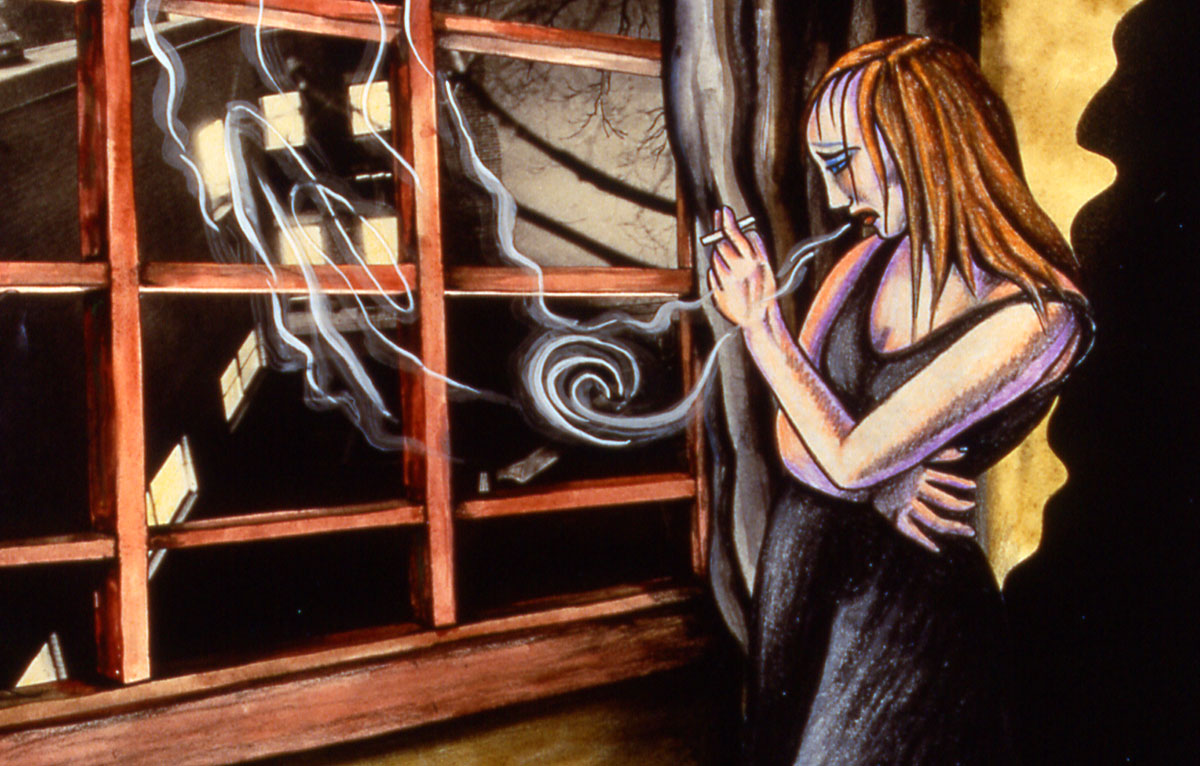In an era where Marvel, DC Comics, and Studio Ghibli dominate the global film scene, a scene that has felt lost since the sale of Miramax to Disney, animated films have bright days ahead. Against the backdrop of a plethora of shaky superheroes in too-tight costumes, independent animated cinema is making a comeback. The distribution platform Mubi has just unveiled to the public the animated filmography of Suzanne Pitt, a feminist and avant-garde artist. Anxiety, dreams, fantasies, and nightmares follow one another in these animated “portraits,” these graphic works that the artist has brought to life.
Joy Street: Dreaming What Reality Forbids!
The line is fine and precise. A woman looks down upon “Joy Street” from her window, observing the gaping void of her existence. Her face is tinged with blue, as if she were becoming, inevitably, a corpse, already taking on its features. As if Kafka’s “The Metamorphosis” were already exerting its destructive influence, she falls, staggers, and collapses onto her bed, a trickle of blood running down her left arm. In this grim existence, an ashtray transforms into a monkey and takes her back to nature in the Amazon. Contrary to appearances, the monkey is not the allegory of Rodriguez’s “Sugar Man.” Born from nothingness, it leads her to the root of existence.
Once again, the artist overlays the pathos since this nature is far from welcoming and already reveals the morbidity of humanity. These animated images are true paintings, works of art, and not mere sketches. By delving into the realm of dreams, Suzanne Pitt restores animation’s letters of nobility, while Marvel and DC Comics, originally bearers of a corrosive critique of reality, indulge in the old fantasies of prepubescent adolescents turned unwilling men.
